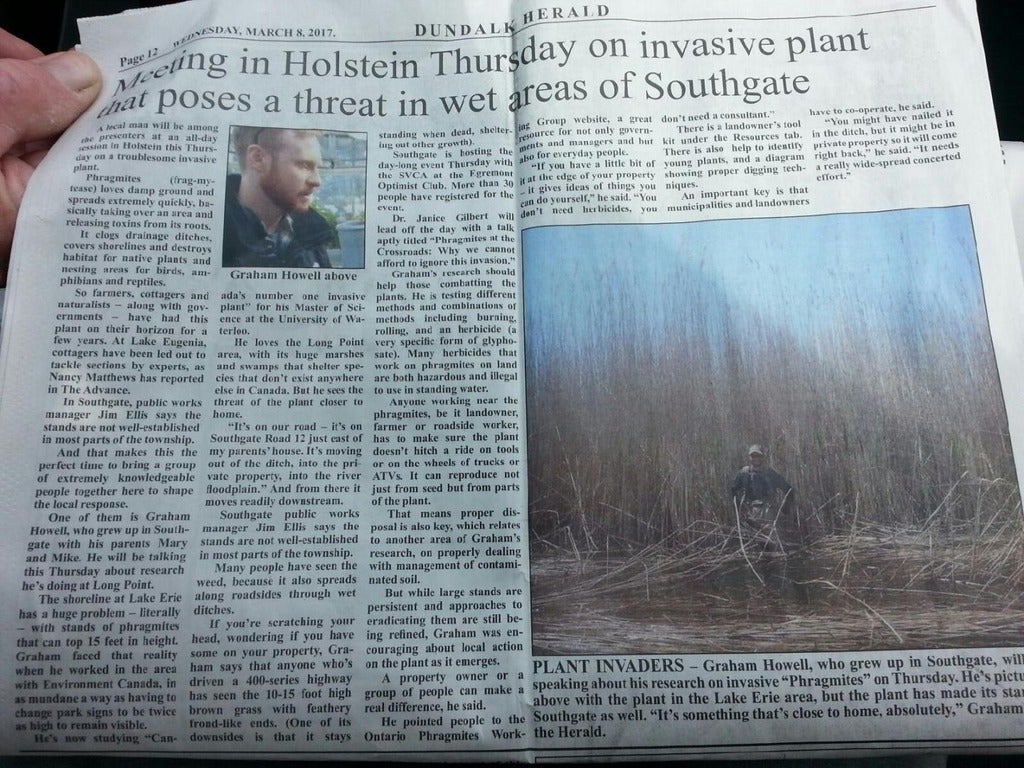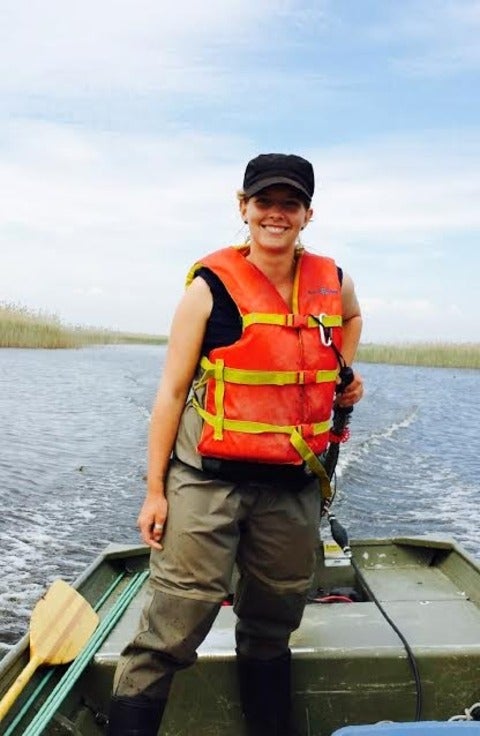MSc. student Graham Howell in the news
MSc. student Graham Howell was making headlines in the Dundalk Herald this week with his research on the invasive grass Phragmites australis. He will be presenting to stakeholders at a workshop hosted by the Saugeen Valley Conservation Authority and the Township of Southgate. The workshop will take place 16th March at 9 am at 392137 Grey Road 109, Holstein, Ontario at the Optimist Community Centre. For more information, contact Jo-Anne Harbinson 519-367-3040 ext. 235 or by e-mail at j.harbinson@svca.on.ca.


